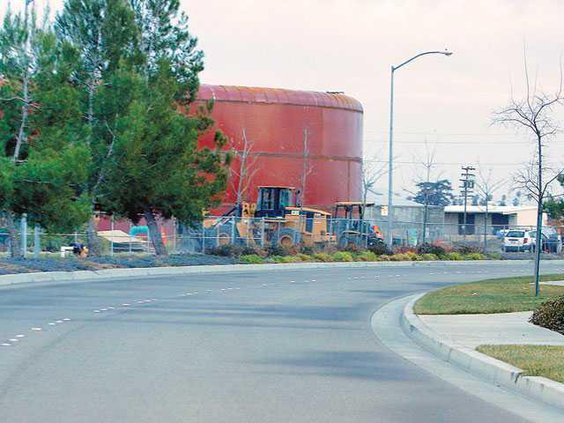Turn on a faucet and water flows out.
Most don’t give municipal water a second thought.
It’s not glamorous but the more than $6 million Manteca has spent this year on major upgrades to the water distribution system is part of an ongoing strategy to secure reliable and clean water for current and future needs at the lowest possible cost.
Manteca is completing its sixth year of significant investments in the water system.
Arsenic reduction
For the past seven years, the City of Manteca has been required to notify residents that some water delivered by the city was out of compliance with regulatory requirements. The primary cause of the non-compliance was arsenic, a naturally occurring element commonly found in ground water.
The city has been working during that time period to install facilities that will ensure the entire system is in full compliance with all standards. In order to comply with these standards, the City has added treatment to 12 wells and abandoned two other wells. Since October 2012, the city has been in compliance with all standards. However, State regulations required the City to continue to notify residents of non-compliance until the city has shown a full year of compliance. That requirement ended in November.
When the new federal mandate was first proposed in 2008, the price tag to put in place arsenic treatment plants at the 12 impacted wells was estimated to cost upwards of $22 million. The actual cost was closer to $14 million thanks to innovative thinking by the city’s engineering staff.
Five of the wells avoided the need for expensive treatment plants that can run between $1.9 million and $3.1 million apiece by a decision to extend pipes where feasible from the main surface water treatment trunk line in north Manteca to well heads. By mixing the high quality surface water with well water it effectively dilutes the arsenic to a point significantly below the new federal mandate.
The strategy required 50 percent less spending for each well that was tied into surface water. It also reduced the ongoing expenditure needed to replace media required with treatment plants at the well head by $1 million a year.
Arsenic is a semi-metal element that is odorless and tasteless. It enters drinking water supplies from natural deposits in the earth or from agricultural and industrial practices based on a 2009 federal Environmental Protection Act report.
Arsenic ingested at sufficient concentrations can result in a variety of non-cancer effects including thickening and discoloration of the skin, stomach pain, vomiting, diarrhea, numbness in the hands and feet, paralysis and blindness. Carcinogenic effects of ingestion or exposure to arsenic at sufficient concentration have been documented to include cancer of the balder, lungs, skin, kidney, nasal passages, liver, and prostrate.
Even so, city officials have said it would take arsenic levels “about 100 times” higher than what were once detected in Manteca wells to cause sickness. They also have described the EPA edict as “extreme” caution.
New line & water tank
Improved water — in both quality and pressure — is being brought to neighborhoods in Southeast Manteca .
A $2.2 million project this year installed a 24-inch water pipeline from East Yosemite Avenue down Austin Road to a point where it heads west under the freeway. It then follows Woodward Avenue before turning north on Atherton Drive to where the 3.6 million gallon water tank is now being put in place.
The introduction of treated surface water into the pipelines serving the neighborhoods around Woodward Park will improve the overall quality as well as water pressure.
The surface water is treated with state-of-the-art filters. Well water — while clean and potable — isn’t cleansed to the same degree as is possible with the treatment plant’s micro filters.
A series of submerged panels at the treatment plant contain 25,000 spaghetti like strands of thin hollow fiber membranes known as ZeeWeed.
As the water passes through, the hollow fiber membrane serves as a physical barrier to contaminants. The porous plastic fibers are hollow in the center. The surface is covered with billions of microscopic pores that filter out all known bacteria and almost every known virus, with minimal or no chemical use.
The fibers are only part of the process at the Nick DeGroot Water Treatment Plant near Woodward Reservoir that has redundancy, constant sampling, and computer as well as human oversight to assure the cleanest water possible flows to the cities of Manteca, Lathrop, and Tracy.
The water tank capacity represents 2.3 million flushes of low flow toilets. It is also the equivalent of 153.5 swimming pools that are 16 by 32 feet with 8.5 feet in the deep end and 3 feet in the shallow end.
Existing residents in the Woodward Park neighborhoods, though, will have a better way to picture what the water tank will represent. They’ll be able to tell it through improved water pressure especially on summer mornings when extensive sprinkler use is underway along with people getting up and taking showers.
Cleaner water & improved pressure





